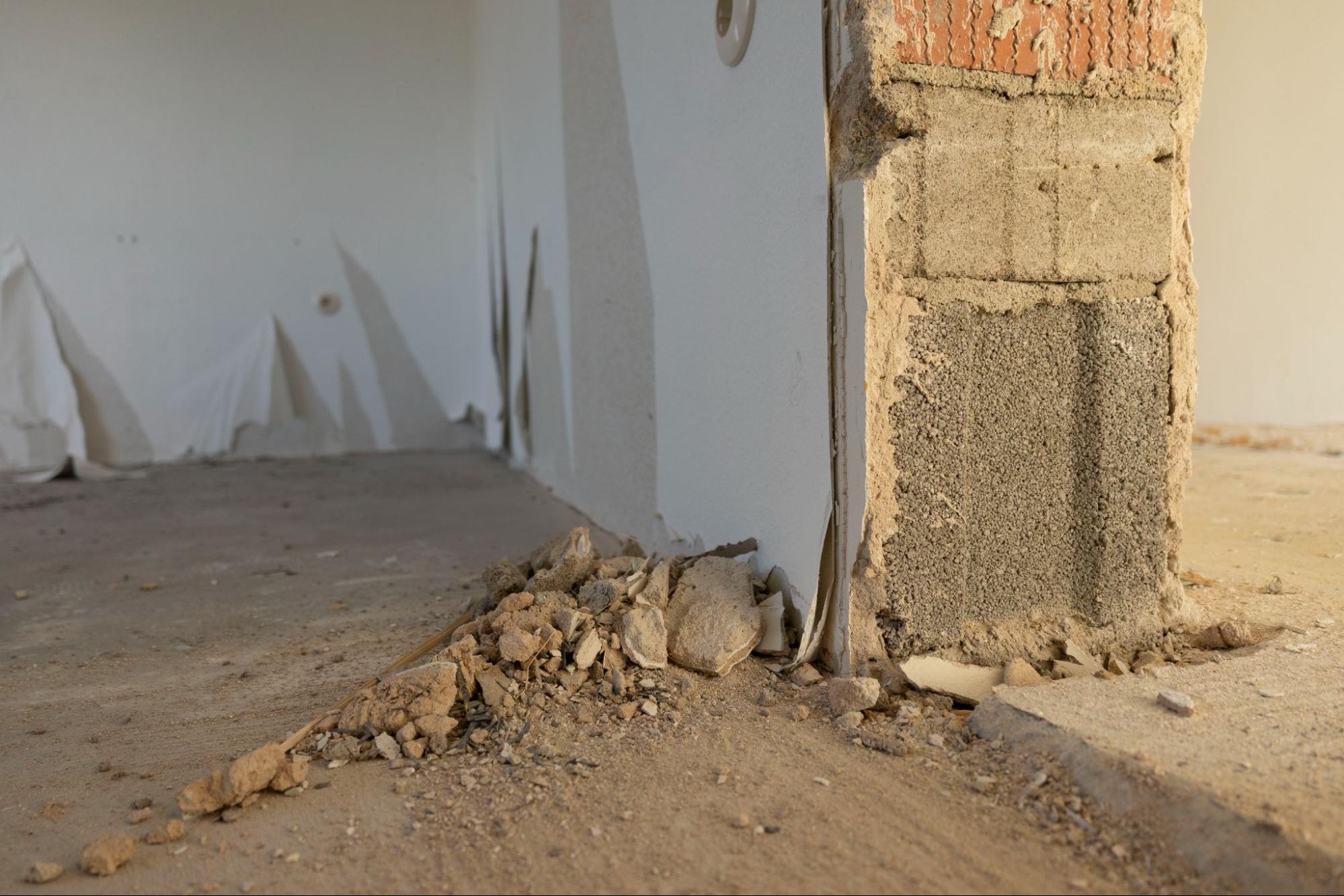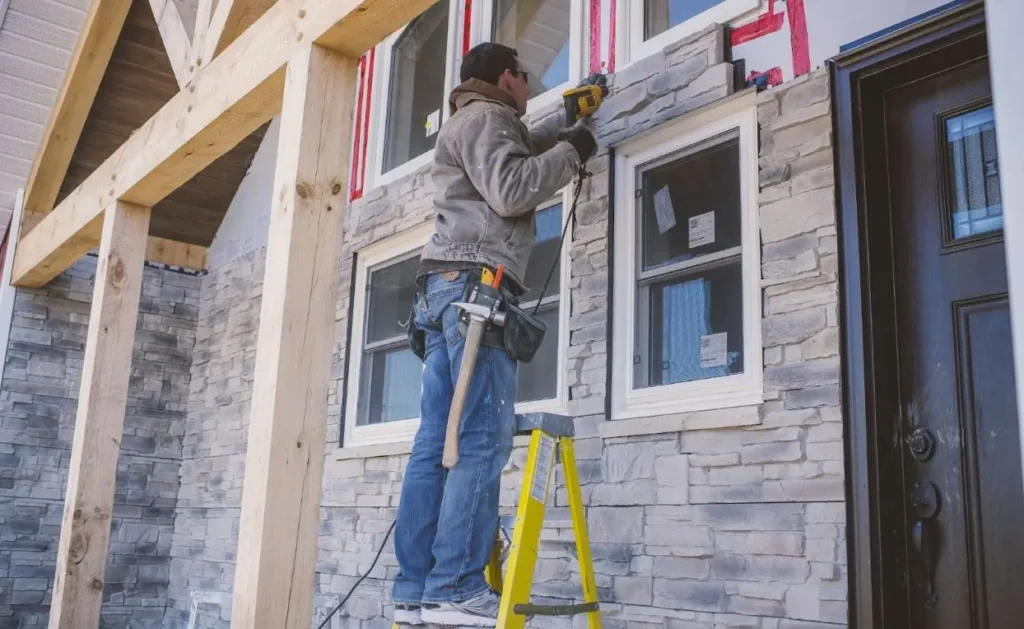
admin
August 13, 2025
Choosing between natural stone veneer and manufactured stone can shape the entire feel of your project. Homeowners, builders, and designers often pause at this decision. Both options bring beauty, but your path impacts the look, cost, and value. You deserve a material that suits your style and stands the test of time. Understanding their core differences makes the choice simpler and smarter.
Natural stone veneer brings the real character of quarried rock to a space. Sliced into thin layers, it offers the rich textures and colors only nature can create. It can be used indoors and outdoors to make a bold, lasting impression. Knowing how it forms helps you appreciate why many consider it timeless:
Natural stone veneer starts at the quarry, where enormous slabs are cut from solid rock and then sliced into thinner pieces to reduce weight. No two stones look exactly alike, offering unmatched authenticity. Colors and textures reflect the mineral composition and age of the stone. Every piece tells its own story, shaped by centuries underground.
Natural stone veneer is durable enough to face harsh weather for decades. Its textures and shades stay rich because they form naturally, not artificially. Compared to other materials, it’s heavier and requires more substantial support. The cost is usually higher, but so is the perceived value. If you want authenticity that lasts, this choice rarely disappoints.
Manufactured stone offers a smart alternative for those seeking beauty on a budget. It mimics the look of natural stone without the weight and price tag. Created using molds and concrete, it suits a wide range of projects. Knowing how it’s made helps you see where it shines.
Manufactured stone starts with molds made from real stone shapes. Concrete and other lightweight materials are poured into these molds, and pigments are added to create realistic color variations. The stone dries into strong, stone-like pieces ready for installation. The entire process occurs faster and more cost-effectively than quarrying natural rock.
Manufactured stone weighs less than natural stone, making it easier to handle. Installation is quicker and more affordable. It offers consistent color and texture, though it can lack deep variation. While durable, it can chip or fade faster than natural stone. Still, it brings an elegant look within a friendlier budget.
When deciding between these two options, breaking down the details is vital. Appearance, durability, and cost all tell different sides of the story. Your choice should fit your long-term plans, not just your immediate needs. Understanding these core differences makes your decision more confident:
Natural stone veneer offers true-to-life color shifts and textures. Manufactured stones can look convincing but often follow repeating patterns. Over time, absolute stone ages gracefully, while manufactured versions may show wear. Authentic stone possesses a depth and warmth that is hard to imitate. Natural stone usually wins for projects seeking unmatched beauty.
Natural stone veneer stands firm against time, enduring decades of weathering. It resists cracking, chipping, and fading better than manufactured stone. Manufactured stone, though durable, is more vulnerable to moisture damage. It may need repairs or replacement sooner than natural stone. If you want fewer long-term headaches, natural stone is a solid bet.

Installing natural stone veneers requires more skilled labor and preparation. It usually costs more upfront due to materials and labor time. Manufactured stone installs faster, often leading to lower overall project costs. However, natural stone may increase property value better over time. Considering installation and lifespan together helps balance the actual price.
There are moments when only the real thing will do. Natural stone veneer is an excellent choice for projects that demand lasting beauty and durability. Authenticity matters whether you’re building a dream home or restoring a historic building. Here are the best situations for choosing natural stone veneer:
High-end homes often feature natural stone on their exteriors for added luxury and curb appeal. Outdoor kitchens, patios, and retaining walls look timeless with real stone. Water features like fountains and ponds feel more organic when constructed with natural materials. Historic renovations often require natural stone to meet authenticity standards. In these projects, cutting corners on material rarely pays off.
Sometimes, a project calls for flexibility and smart spending. Manufactured stone fits well where budget and speed are critical. It brings charm and beauty without exhausting resources. These situations show when manufactured stone shines.
Manufactured stone is ideal for residential projects that require affordable elegance. Lightweight manufactured stone is often used for interior accent walls and fireplace surrounds. Commercial projects benefit from its fast installation. Manufactured options suit decorative columns and feature walls where real weight is impractical. In these settings, beauty meets efficiency perfectly.
Both natural stone veneer and manufactured stone need proper care to stay beautiful. Routine maintenance protects your investment and keeps surfaces looking fresh. While both materials are strong, each requires specific methods to maintain its best condition. Knowing how to care for them avoids costly damage later:
Natural stone veneer thrives with gentle, regular cleaning using water and mild soap. Avoid harsh chemicals that could stain or wear down the stone’s surface. Sealing is often recommended, especially for outdoor installations exposed to moisture. Resealing every few years can keep the stone vibrant and protected. With careful attention, natural stone retains its rich character for decades.
Manufactured stone needs low-pressure cleaning with water to avoid surface damage. Harsh cleaners can strip away the color or surface texture over time. Sealing is optional but can extend the life and beauty of the stone. For stubborn dirt, a gentle brush works better than abrasive tools. Good maintenance habits ensure manufactured stone stays fresh and appealing longer.

Sustainability matters more than ever when choosing building materials. Natural stone veneer offers an eco-friendly path when sourced and used responsibly. Its durability and minimal processing requirements make it a smart choice. Understanding its environmental benefits can guide greener project decisions.
Natural stone veneer demands less processing compared to heavily manufactured materials. Quarrying stone uses energy, but no synthetic chemicals are involved. Because it can last for decades without replacement, natural stone reduces future waste. Locally sourced veneer also reduces transportation emissions. Choosing natural stone supports a long-term, low-impact building strategy.
Using natural stone veneer protects investments while respecting the planet. Its ability to withstand harsh climates means fewer repairs and replacements over time. Older stone installations often remain intact for generations, reducing landfill impact. Stone waste can also be repurposed for new construction or landscaping projects. Building with real stone connects craftsmanship with lasting environmental stewardship.
Natural stone veneer brings a timeless character that suits many home designs. It can enhance traditional, rustic, or even modern spaces with the right touch. Choosing the right stone texture and color makes all the difference. Understanding how natural stone veneer complements different styles helps your project stand out:
Traditional homes and rustic retreats often rely on stone’s natural beauty. Natural stone veneer provides rich textures and organic color shifts that feel authentic. Farmhouse, Colonial, and Mediterranean designs pair well with earth-toned stone. Rough-cut pieces can add a handcrafted, old-world feel to exteriors and interiors. Natural stone always anchors classic designs with strength and charm.
Natural stone veneer can also elevate modern and contemporary homes when chosen thoughtfully. Sleek cuts and smooth finishes offer a clean, sophisticated look. Neutral-colored stones like slate or light limestone fit minimalist designs perfectly. Using stone as an accent in modern spaces creates texture without overwhelming simplicity. Natural stone adds warmth to crisp, architectural lines when used with intention.
Every project is a chance to create something lasting that speaks louder than trends. Choosing between natural stone veneer and manufactured stone is more than picking a material — it’s setting the tone for everything that follows. A strong foundation begins with the choices made today, and the right stone choice can shape spaces, create memories, and define futures. Trust your instincts and vision, and choose the material that feels right in your hands and heart. Your project deserves nothing less than a finish that tells a story worth remembering.
Ready for more expert tips and inspiration? Visit the Onyx Home Improvements blog and start planning your next project today.
Tags:
Latest News
Recent News & Articles